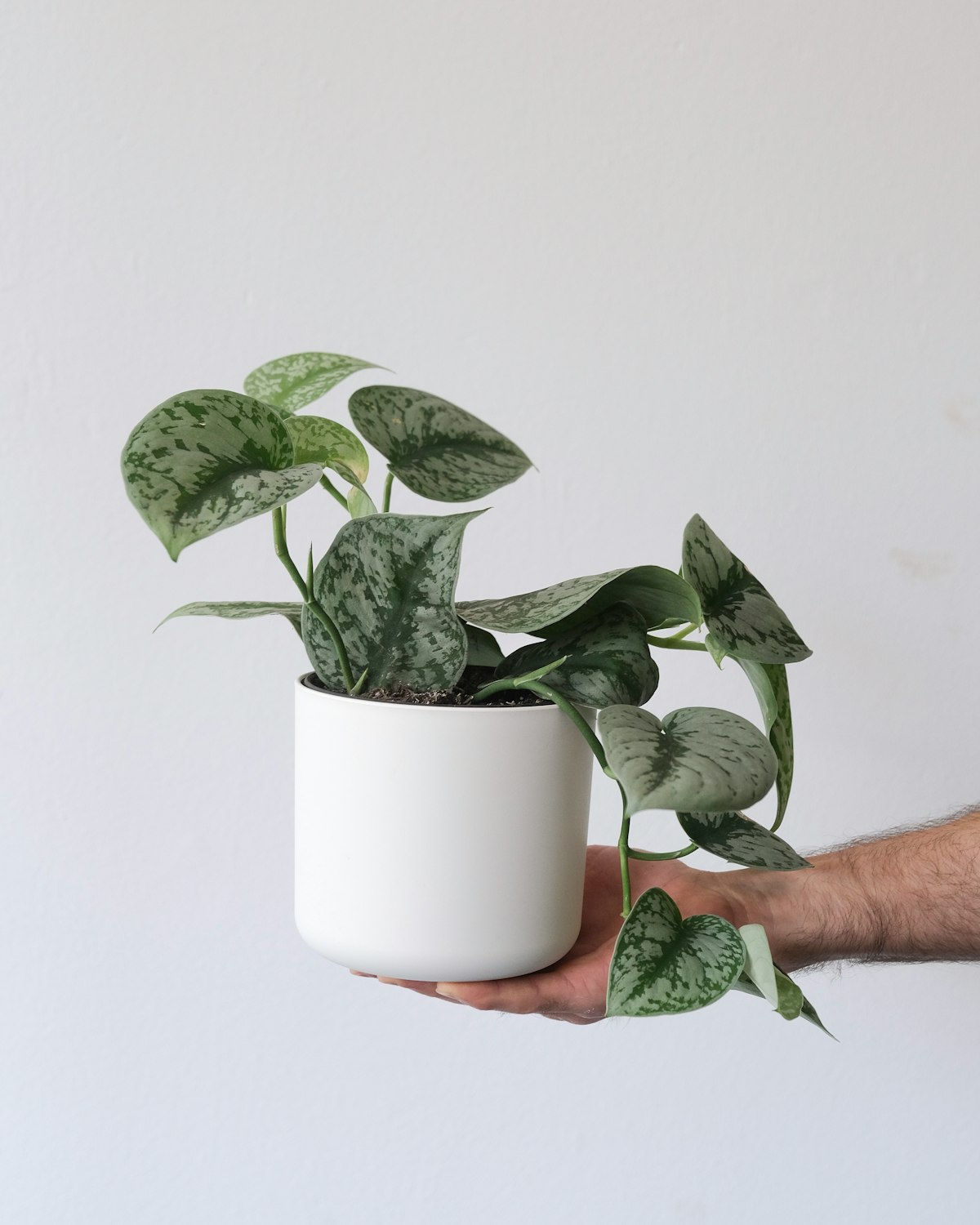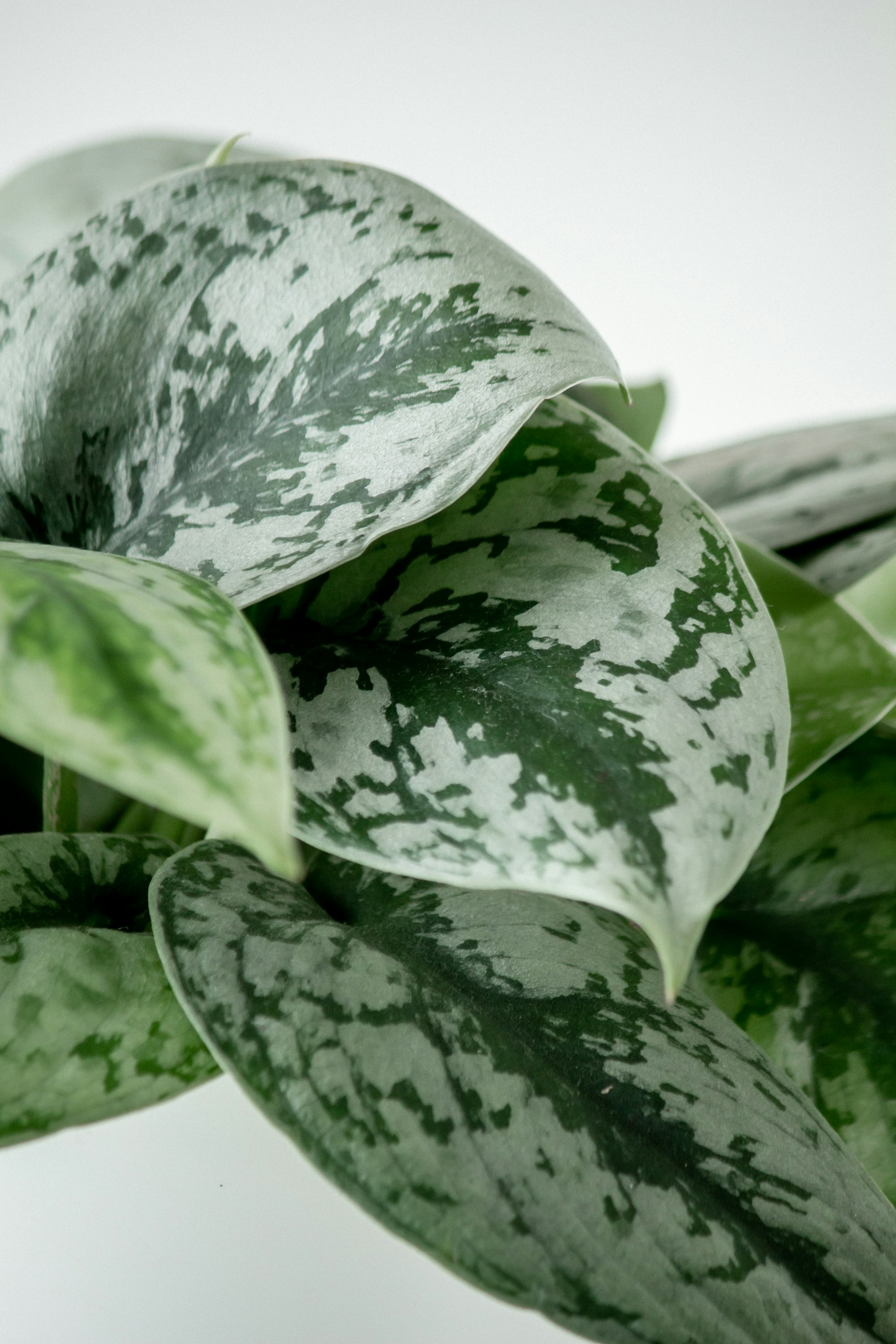How to Grow Scindapsus Pictus
Scindapsus Pictus, also known as the Satin Pothos, is a beautiful, low-maintenance tropical plant that can enhance your indoor space with its vibrant green and silver foliage.

Table of Contents
As a popular choice among houseplant enthusiasts, it is easy to grow and requires only a few simple care steps to thrive.
To begin, find a spot with bright indirect light near a window, as too much direct sun can harm your Scindapsus Pictus.
It's crucial to use well-draining soil, such as a commercial indoor potting mix, to avoid soggy conditions that could lead to root rot.
With just a bit of attention, your Scindapsus Pictus will grow into a stunning addition to your home.
About Scindapsus Pictus Plant
Scindapsus pictus, also known as satin or silver pothos, is a stunning tropical plant belonging to the Araceae family.
Originating from Southeast Asia, this perennial vine features beautiful silver variegation on its green leaves, making it a popular choice for houseplant enthusiasts.
Satin pothos is an evergreen vine closely related to the philodendron plant and shares some similarities with its botanical cousin, the common pothos (Epipremnum aureum).
As a low-maintenance and easy-to-grow houseplant, Scindapsus pictus makes a perfect addition to your indoor jungle.
Growing Scindapsus Pictus
To plant Scindapsus Pictus, choose a well-draining soil mix, such as a commercial indoor potting mix.
This mix typically contains peat moss, pine bark, and perlite or vermiculite, providing the ideal environment for healthy growth as Scindapsus Pictus thrives in soil that isn't too wet or soggy.
When planting, gently loosen the root ball and place the Scindapsus Pictus in your chosen container, ensuring the roots are covered with soil.
Be attentive to the drainage in your container, as proper drainage will prevent the roots from sitting in excessive moisture and help avoid root rot.

Caring for Scindapsus Pictus
Sun and Temperature
Scindapsus Pictus thrives in bright indirect light, with a bit of morning sun ideal. Keep it in a room with temperatures between 65°F and 85°F for the best growth.
Water and Humidity
You should maintain a regular watering schedule, allowing the plant's soil to dry slightly between waterings. Mist your plant occasionally to keep a humidity level of around 40-60%, as increased humidity encourages healthy growth.
Soil and Fertilizer
Use a well-draining soil mix containing peat moss and perlite for your Scindapsus Pictus. Follow the manufacturer's instructions to apply a balanced liquid fertilizer every 4 to 6 weeks during the growing season.
Repotting
Repot your Scindapsus Pictus approximately every two years, transferring to a larger pot with a drainage hole. Freshen the soil mix during this process, helping encourage new growth and root development.
Pruning and Propagation
Prune your plant by snipping off damaged or dead leaves, and trim when vines become too long. Propagate Scindapsus Pictus by taking stem cuttings with at least one leaf and rooting them in water or moist soil.
Troubleshooting Plant Problems
Growing Problems
Scindapsus Pictus varieties like Argyraeus and Exotica can face growing problems, such as root rot and leaf burn.
Root rot usually occurs due to overwatering, so ensure proper drainage and only water when the top inch of soil feels dry.
On the other hand, leaf burn results from excessive exposure to direct sunlight. Place your Scindapsus Pictus where it gets bright, indirect light to avoid leaf discoloration and crispy edges.
Pests and Diseases
Scindapsus Pictus plants are prone to pests like spider mites, scales, and occasional diseases.
To prevent spider mites, maintain a sufficiently humid environment and regularly inspect your plant for signs of infestation, such as delicate webs and small dots on leaves.
Scales can be dealt with by wiping the affected areas with rubbing alcohol or using a horticultural oil spray.
When propagating or repotting the plant, maintain proper hygiene and use sterilized tools to avoid introducing pathogens that might cause diseases.
Regular pruning helps to keep the plant healthy and prevents the spread of pests and diseases.
Conclusion
Scindapsus Pictus is an easy-to-grow, low-maintenance tropical plant. Its attractive foliage and silvery variegation make it an excellent addition to your indoor plant collection.
To ensure its healthy growth, use a commercial indoor potting mix and provide proper drainage.
Remember to keep its environment similar to its natural habitat in Southeast Asia, maintaining adequate watering and sunlight conditions.
Frequently Asked Questions
How to care for Scindapsus Pictus with yellow leaves?
Yellow leaves on your Scindapsus Pictus are often a sign of overwatering. Let the soil dry out a bit before watering again to fix this issue. If yellow leaves persist, you may need to switch to well-draining soil to prevent root rot.
What causes Scindapsus Pictus leaves to curl?
Leaves may curl on Scindapsus Pictus due to temperature stress or inadequate humidity. Ensure your plant is in a comfortable temperature range of 65-85°F and maintain adequate humidity levels by misting the plant or using a humidifier.
How to propagate Scindapsus Pictus Argyraeus?
To propagate Scindapsus Pictus Argyraeus, take a stem cutting with at least one leaf and a few nodes. Place the cutting in water or moist soil, ensuring the nodes are submerged. Give it 2-4 weeks to develop roots before transplanting.
What is the ideal growth rate of Scindapsus Pictus?
The ideal growth rate of Scindapsus Pictus depends on various factors, such as light conditions and humidity. However, when properly cared for, the plant should display a steady growth rate, with new leaves appearing regularly.
How to grow Scindapsus Treubii Moonlight?
To grow Scindapsus Treubii Moonlight, use a well-draining potting soil and place the plant in bright, indirect light. Water only when the soil dries out and provides adequate humidity through misting or a humidity tray.
How to enhance the silver color on Scindapsus?
Boosting the silver color on Scindapsus involves providing optimal care. Ensure your plant receives bright, indirect light and adequately manages water and humidity levels. Pruning and cutting back the plant can encourage fuller growth and more vibrant silver hues.


